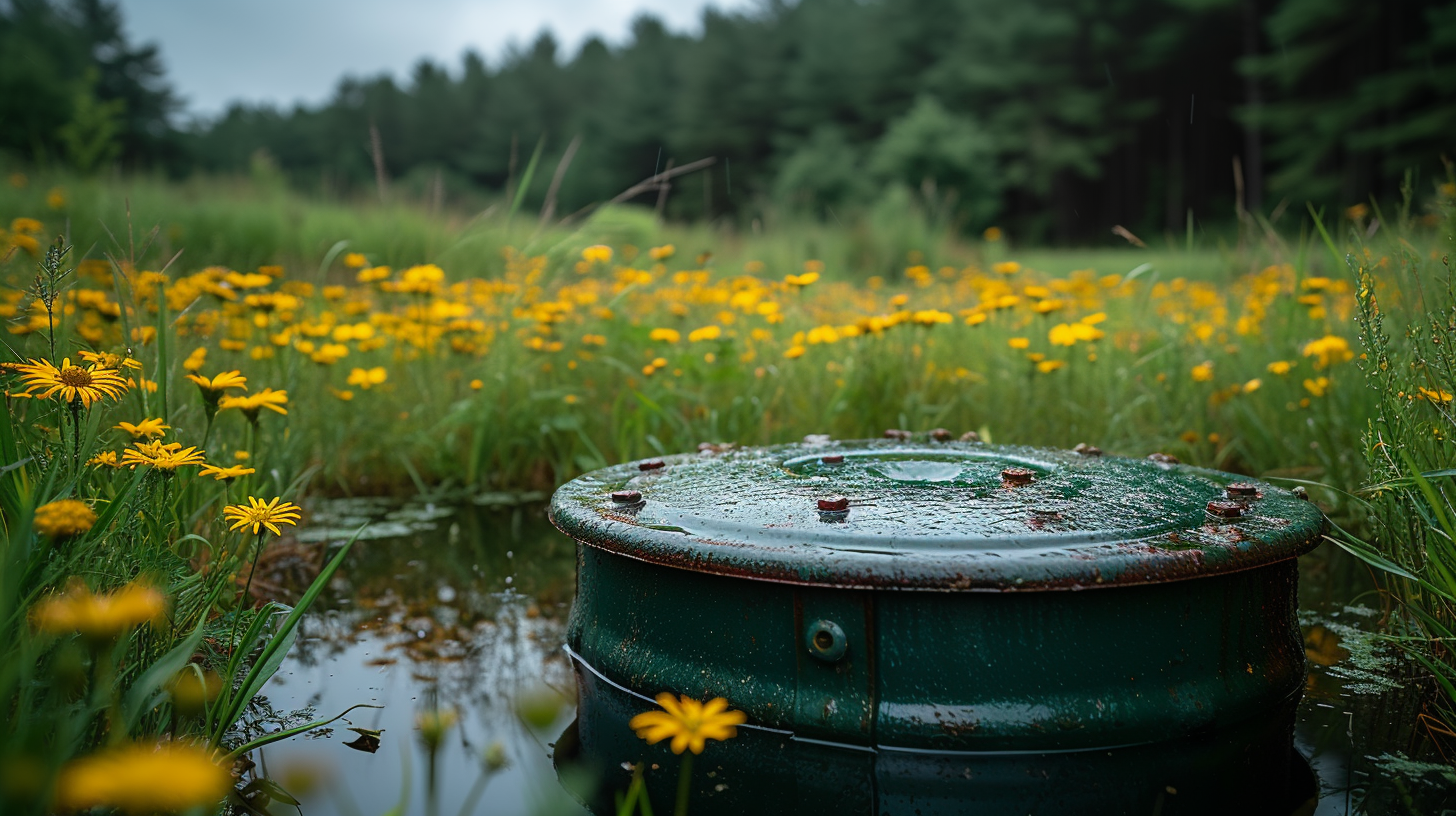Key points
• Aerobic Treatment Process: An aerobic septic system utilizes oxygen to break down organic matter more efficiently than traditional anaerobic systems. It involves a multi-chamber tank where bacteria thrive in an oxygen-rich environment, resulting in faster and more thorough waste treatment.
• System Components: The system typically includes a pretreatment tank, an aeration chamber, a settling chamber, a disinfection unit, and a spray or drip field. It relies on mechanical components such as air pumps or blowers to circulate air within the treatment tank.
• Environmental and Health Advantages: Aerobic systems produce effluent that is cleaner and less harmful to the environment than standard septic systems. They are often used in environmentally sensitive areas where traditional septic systems might not meet regulatory standards for groundwater protection.
Contents
- 1 Key points
- 2 Comparison of Aerobic vs. Anaerobic Septic Systems
- 3 Operational Principles
- 4 Overview of System Components
- 5 Detailed Aerobic Septic System Sprinkler Diagram
- 6 Three-Tank Aerobic Septic System Configuration
- 7 Initial Investment in Aerobic Septic Systems
- 8 Long-term Financial Benefits
- 9 Do-It-Yourself (DIY) Aerobic Septic System Installation: Feasibility and Guidelines
- 10 Aerobic Septic System and Gardening
- 11 Managing Aerobic Systems in Varying Climates
- 12 Frequently Asked Questions (FAQ)
Comparison of Aerobic vs. Anaerobic Septic Systems
A key distinction between aerobic and anaerobic septic systems lies in the presence or absence of oxygen. Aerobic septic systems inject air to support aerobic bacteria that break down waste rapidly and efficiently. On the other hand, anaerobic systems don’t require oxygen, relying on slower-acting bacteria to decompose waste. Here’s the nitty-gritty:
- Aerobic systems typically yield cleaner effluent compared to their anaerobic counterparts.
- Anaerobic systems are generally less complex and therefore can be more affordable.
Simply put, each has its pros and cons; your choice might hinge on local regulations, budget constraints, or environmental considerations.
Operational Principles
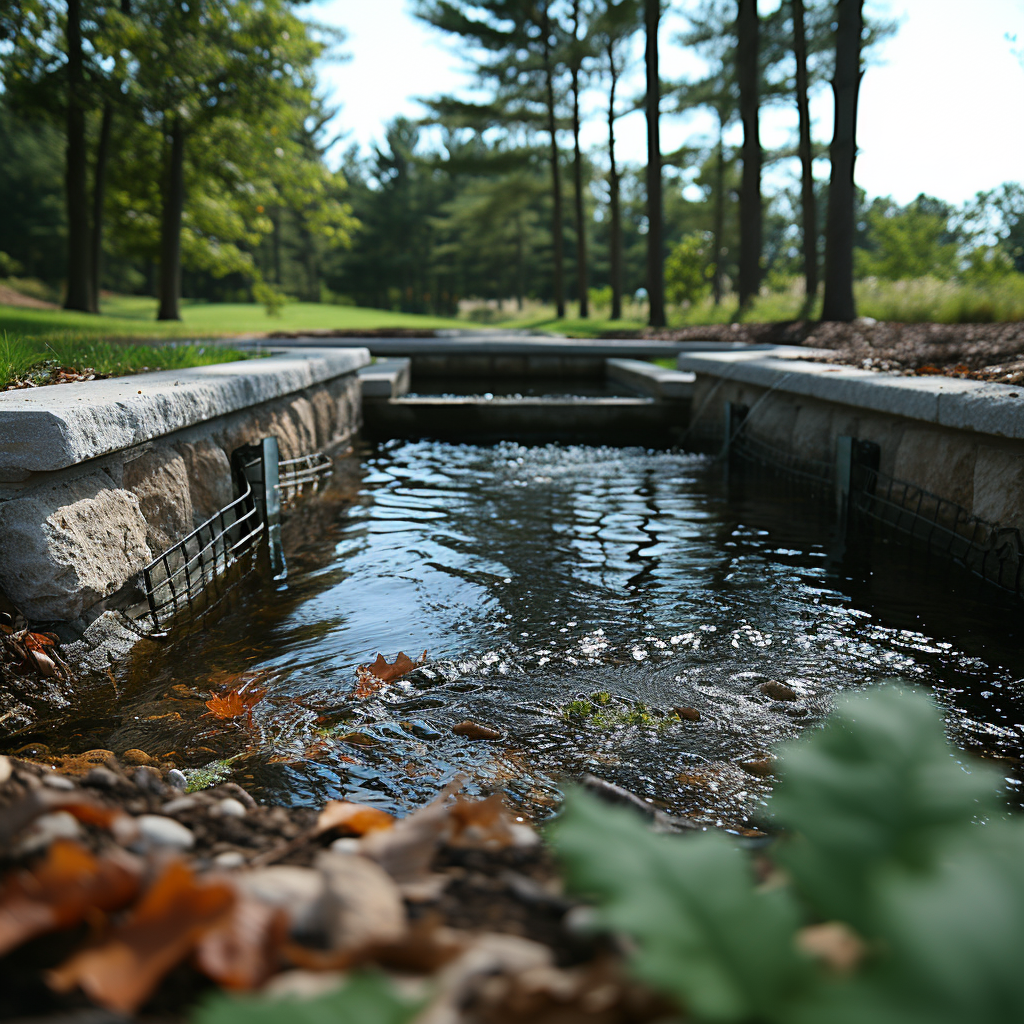
The mechanics of an aerobic septic system aren’t rocket science. Basically, it involves three primary stages: pre-treatment to remove gross solids, the aeration phase where small creatures get busy eating up waste with the help of oxygen, and finally a settling stage allowing any undigested solids to settle out before discharge.
Efficiency and Performance
When it boils down to getting bang for your buck, aerobic systems generally deliver better performance through increased efficiency. They can process sewage faster than anaerobic systems since the beneficial bacteria in an oxygen-rich environment are more active—meaning they’re hard at work munching away at waste products more effectively.
Environmental Impact
Let’s talk about being green—environmentally speaking, anyway. Aerobic septic systems can have a leg up due to their ability to produce cleaner effluent with fewer pollutants and nutrients—a win for Mother Nature. This reduced level of contaminants means a lesser chance of groundwater contamination if the system is properly maintained and operated correctly.
In short, while there’s no such thing as a one-size-fits-all solution in wastewater treatment technology, aerobic septic systems offer a compelling choice for those seeking an efficient and environmentally friendly option. Just like any piece of equipment or machinery—it’s all about keeping it well-oiled (well-aerated in this case) for peak performance.
Overview of System Components
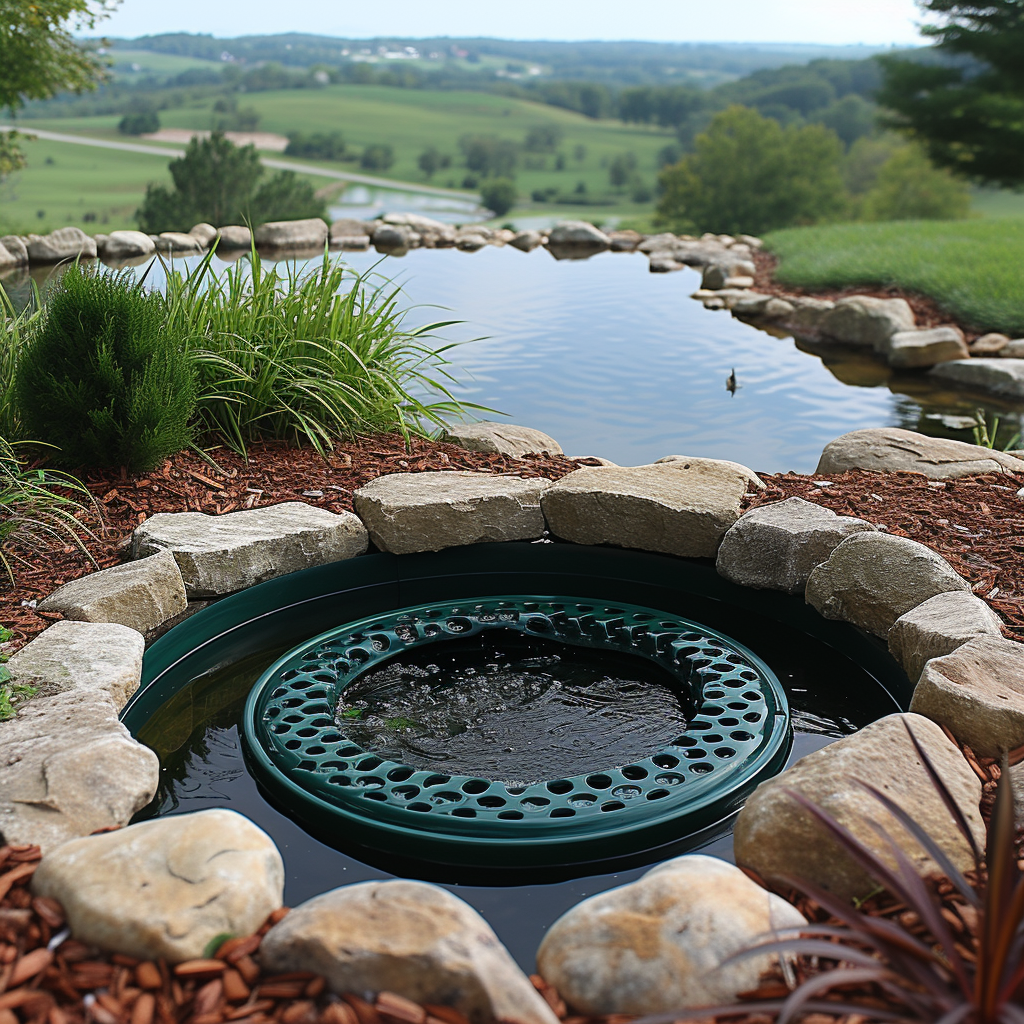
To say that an aerobic septic system is complex might be a bit of an understatement. It’s akin to a small wastewater treatment plant—right in your backyard. The system’s main components include tanks, sprinklers, pumps, and alarm systems. Each plays a pivotal role in ensuring the waste is treated effectively before it heads back into the environment.
Tanks
Now, let’s dive a little deeper into tanks. These are not just any old containers—they are meticulously designed for separating solid waste from liquids, promoting breakdown thanks to our microscopic pals—bacteria. In essence, they provide a controlled environment for waste to break down efficiently.
Sprinklers
Moving on, sprinklers do more than water your lawn; in this scenario, they’re essential for dispersing treated water over a wider area. But we’re not talking about the kind you might find at the hardware store—these are specialized for even distribution.
Pumps
Think of pumps as the heart of the operation, pumping life into the system by moving wastewater through each stage of treatment like clockwork.
Alarm Systems
Let’s not forget about the alarms. They may not prevent problems, but they sure can signal when there’s trouble on the horizon—alerting you to issues so you can act fast!
Detailed Aerobic Septic System Sprinkler Diagram

Imagine having x-ray vision that lets you peer under your yard’s surface to see an entire aerobic septic system layout—it’d surely simplify things! A detailed diagram serves this exact purpose. It helps homeowners visualize how those sprinklers are positioned to ensure their lawns are evenly covered with effluent that’s been given the green light by environmental standards.
Three-Tank Aerobic Septic System Configuration
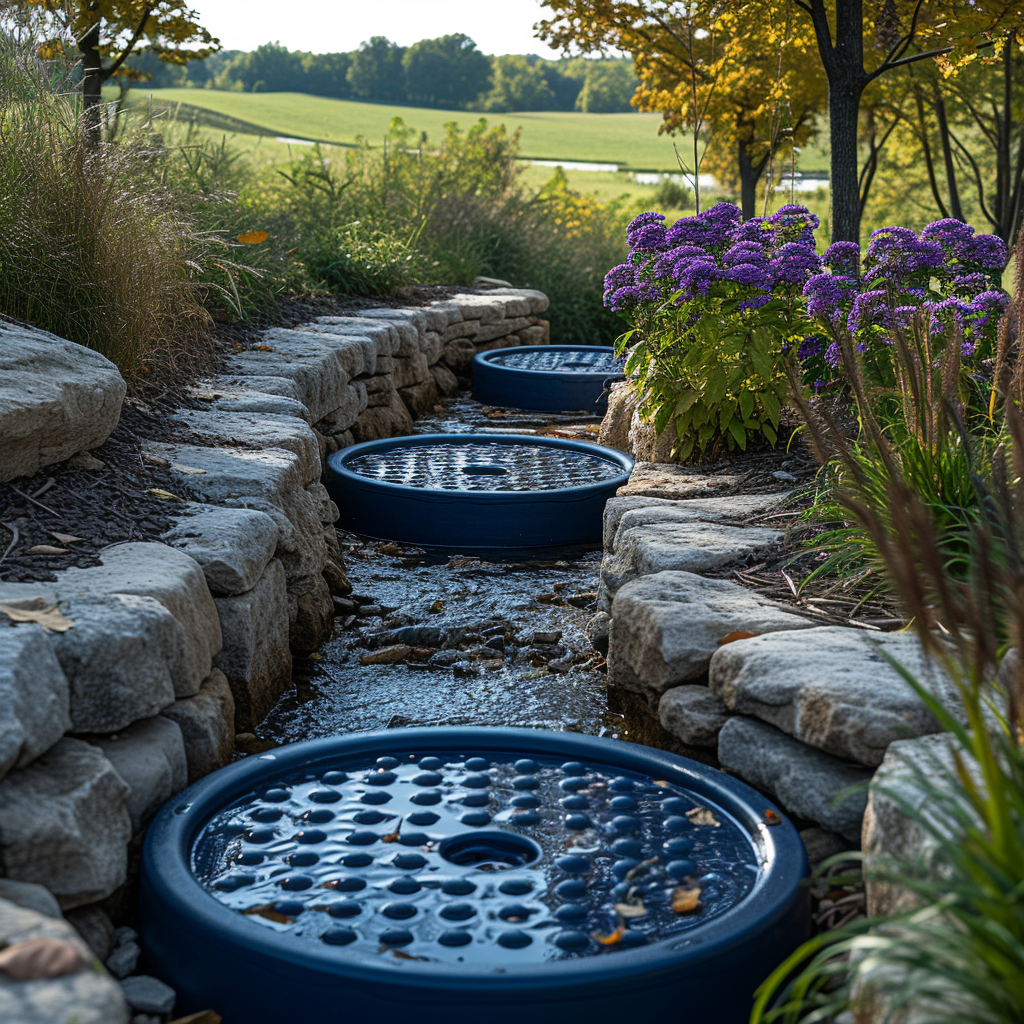
Gone are simpler times when septic systems were one-trick ponies. The modern three-tank configuration includes a trio of hardworking components each dedicated to a stage of waste treatment—with diagrams illustrating how these tanks work together.
Flow Process
What is the flow process? It’s practically a dance of sorts where wastewater gracefully moves from one tank to the next. Through physical separation, biological digestion to final disinfection—everything flows smoother than conversation at a high school reunion.
In summing up, aerobic septic systems may seem daunting with their complexities. Yet once fully understood—from tanks that start the party, sprinklers which make it rain (treated water!), pumps keeping things lively and alarms calling last orders—everything clicks like pieces in a jigsaw puzzle.
And remember that detailed sprinkle diagram or three-tank configuration map? They’re not just pretty pictures; they are your guides through the suburban jungle of wastewater treatment.
Initial Investment in Aerobic Septic Systems
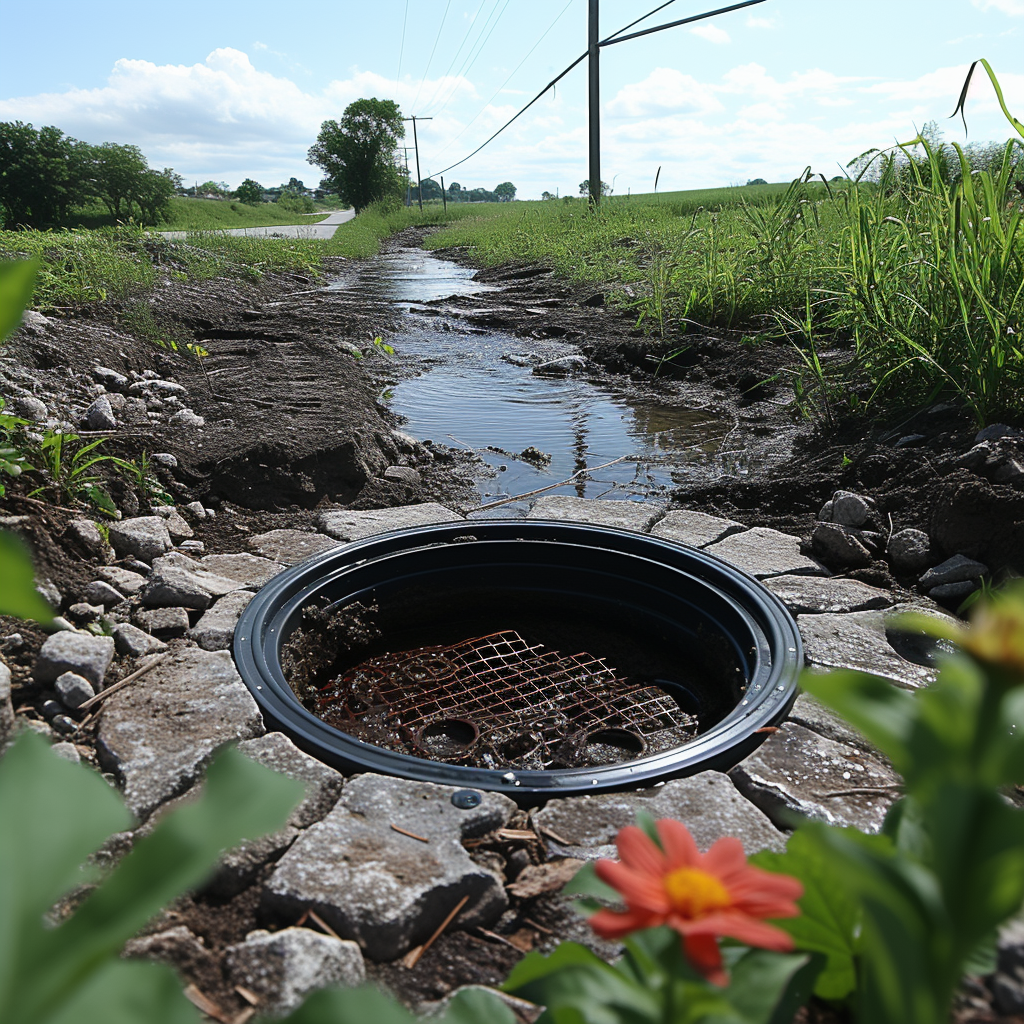
Tackling the upfront costs of aerobic septic systems, let’s delve into how much dough you’ll have to fork over initially. This isn’t just about buying the system itself; it includes installation costs too. You’re looking at a ballpark figure somewhere between a couple thousand and upward of five times that—quite the range!
The price can fluctuate due to system size, soil type, site specific prep work, and whether or not you’re installing feed lines. Shelling out more upfront might sting a bit, but hey, sometimes you gotta spend money to save money, right?
Long-term Financial Benefits

But hold up, there’s a silver lining with these aerobic systems. Sure, they may take a larger bite out of your wallet at the start, but over time they often pay for themselves. Given their efficient treatment capabilities, some locales offer tax incentives or rebates for going eco-friendly.
We’re talkin’ reduction in utility bills since treated water from your own backyard can be repurposed for non-potable uses like irrigation. Plus, well-maintained systems mean fewer repairs and extended life spans—a win-win for your pocketbook.
Do-It-Yourself (DIY) Aerobic Septic System Installation: Feasibility and Guidelines
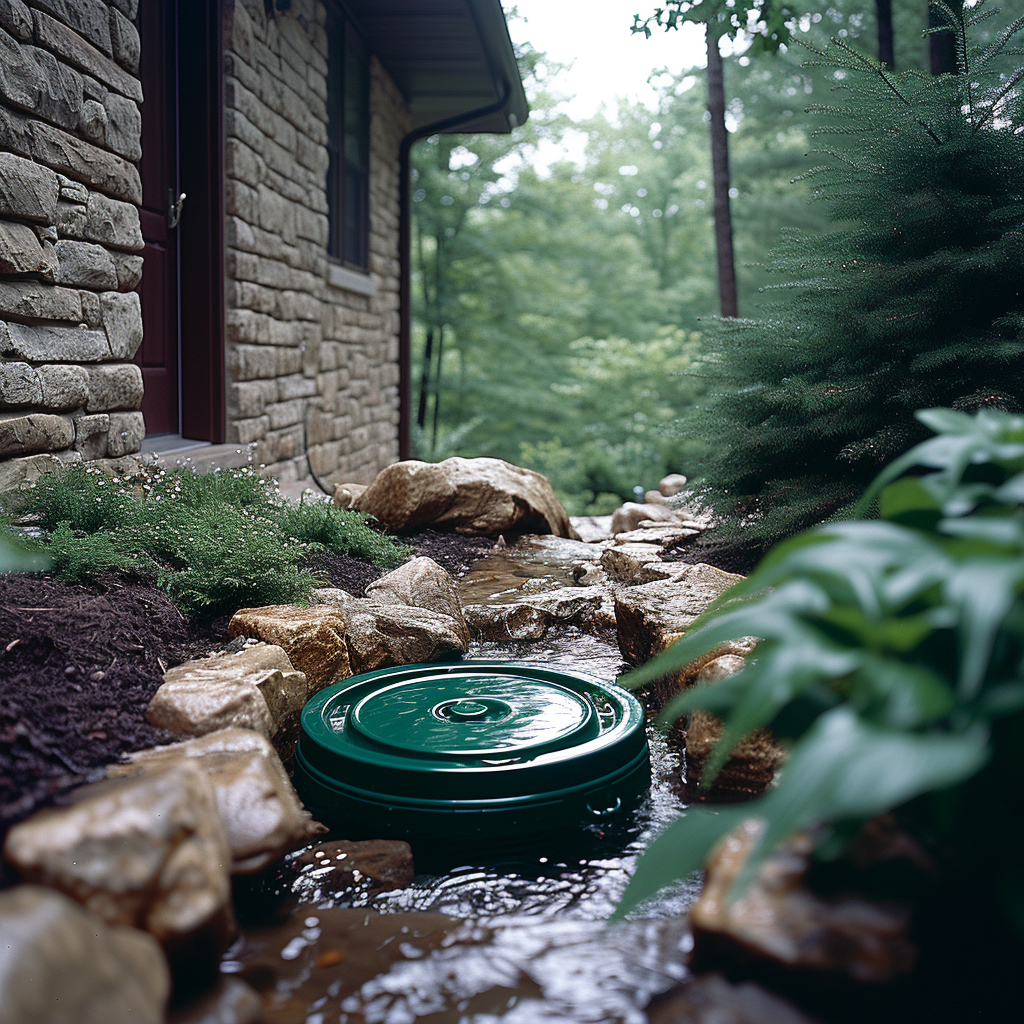
For the hands-on crowd with a knack for DIY projects, installing an aerobic septic system yourself may seem like a tempting cost-cutting move. But before you roll up those sleeves and dive in, there’s some real talk to be had. It’s not an easy task; this is complex stuff requiring permits, inspections, and precise engineering knowledge. Without proper know-how and adherence to local regulations, things could go south real quick—think health risks or hefty fines for code violations.
Cost-saving Tips
If you’re set on pinching pennies and taking the plunge into DIY installation territory, arming yourself with info is key. Research till the cows come home about system types best suited for your soil conditions.
Rediscover borrowing instead of buying—rent tools rather than purchasing them outright. Try recycling some materials (where safe), and be ready to call in professional help if things get too hairy.
In essence, rolling with an aerobic septic system demands a good ol’ cost-benefit analysis—weighing initial investments against long-term gains.
And while DIY may look appetizing from a financial standpoint, it’s inviting more potential complications than one might reckon with. In any case, keeping an eye out for cost-effective routes without cutting crucial corners will ensure you maintain both your sanity and savings.
Maintaining the functionality and efficiency of a wastewater treatment system goes hand in hand with operation. It’s not just about making a system work; it’s about keeping it working well, which involves routine maintenance, inspection, cleaning, and occasionally replacing parts like pumps.
And let’s face it; things are bound to get complicated sometimes—that’s where troubleshooting comes into play. You’ve got to know what to do when alarms blare or when Jack Frost causes mayhem with freezing temps.
Routine Maintenance Procedures
To stave off major problems, you’ve got to stick to regular maintenance tasks. You can start by checking sludge levels, ensuring filters aren’t clogged, and monitoring system pressures and flows.
These little checks can keep everything running as smoothly. Also, don’t forget to scrutinize control panels and electrical components; a few minutes here can save hours down the road.
Inspection and Cleaning
Let’s talk elbow grease—inspecting and tidying up the system prevents a world of pain later on. Be thorough with your inspection routine: look over every nook and cranny for signs of wear or damage. And when you clean, make sure those screens, pipes, and tanks are as spotless as your granny’s kitchen floor.
Aerobic Septic System Pump Replacement
Every once in a blue moon, a pump will kick the bucket, and replacing it is not optional—it’s essential! Always double-check that you’ve got the right type of pump on hand before diving into this job. Details matter here: correctly reinstalling floats and reconnecting plumbing makes all the difference between a job well done and a do-over.
How to Test Aerobic Septic System Sprinklers
Sprinklers are more than just fancy lawn accessories—in an aerobic system, they’re vital! But how do you know they’re working right? Simple: testing them is a piece of cake if you follow proper procedures.
Testing Procedures
Gather your tools first and once you’re ready, turn those sprinklers on manually and keep your eyes peeled for uneven distribution or blockage. Normally they’re pretty steady Eddies but check for rogue sprayers just in case.
Troubleshooting Common Issues
When things go sideways, you need to keep a level head. Is there a funny noise coming from the tank? Does something smell fishy? Take things step by step—identify symptoms first, then dig deeper until you hit the root cause like Sherlock hunting for clues.
Addressing Aerobic Septic System Problems
When trouble’s brewing with your septic system, nip it in the bud fast! Look out for red flags like alarms sounding off or bad weather on the horizon that can throw a wrench in your system’s workings.
Alarm Going Off
Hearing an alarm can send anyone into panic mode—but take a deep breath. Check power supplies or float switches since these often cause false alarms; it could be nothing major. Still out of sorts? Calling in the pros may be your best bet.
Freezing Weather Precautions
Bitter cold weather could freeze your pipes quickly so wrap ’em up with insulation or heat tape.
Resolving Failures and Malfunctions
Sometimes despite our best efforts things go kaput. Don’t throw in the towel—get down to troubleshooting why that alarm won’t quit or why things aren’t flowing right. Fixes might range from pressing reset buttons to hauling out sludge that’s blocking systems.
Above all else remember: stay calm—and carry on maintaining your system with diligence!
Aerobic Septic System and Gardening

Utilizing an aerobic septic system for gardening can be a shrewd choice, as it often leads to effective treatment of domestic wastewater. As the name suggests, this type of system harnesses the power of aerobic microorganisms which require oxygen for their metabolism, efficiently breaking down and treating the waste.
When you’re after a green thumb whilst maintaining your septic system effectively, there’s a bit of know-how that’ll go a long way.
Effects on Soil and Plant Health
Gushing over your garden starts with understanding how an aerobic septic system influences it. The treated water can be advantageous for plants since it’s generally packed with essential nutrients like nitrogen and phosphorus.
However, it’s prudent to consider that excessive amounts can lead to nutrient saturation, which isn’t great for your soil’s health or plant growth. Keeping everything in balance is key; too much of a good thing can turn sour pretty fast.
Using Treated Wastewater for Irrigation
Irrigating with treated wastewater shouldn’t be done willy-nilly—it requires thought and planning. Firstly, make sure the water quality meets the local requirements for such reuse.
Then, devise a scheme that applies the wastewater evenly across your plot. It’s not exceedingly difficult, but getting it right will reap rewards in your garden without causing harm to the environment or your crops.
Managing Aerobic Systems in Varying Climates
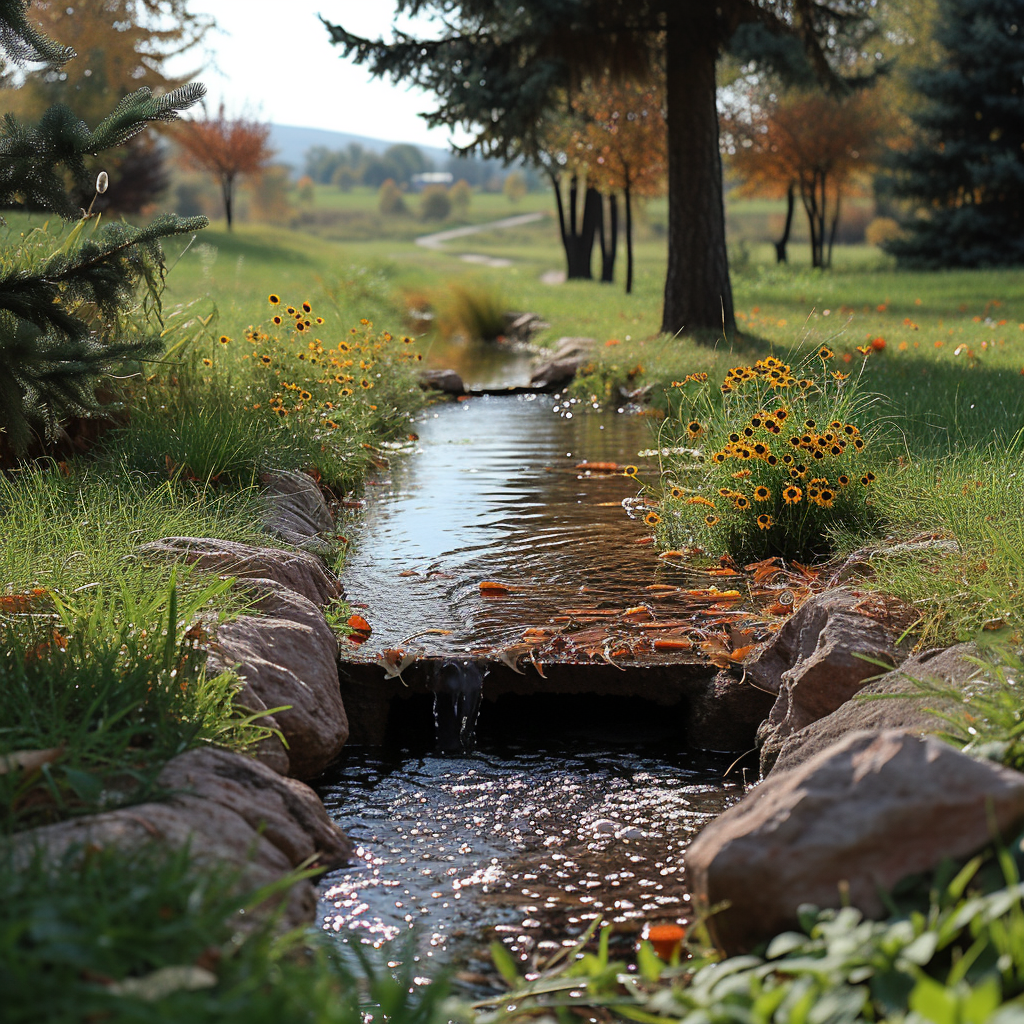
Believe it or not, climate plays quite the part in how an aerobic septic system operates. Whether you’re sweating through summer or chilled by winter winds, different climates necessitate tweaks in managing your system.
Cold Weather Considerations
In chilly climes, remember that Jack Frost can be unkind to your septic system if it’s not properly looked after. Freezing temps may cause components of the system to freeze over—which is anything but ideal.
To combat this issue,
- Ensure your system has ample insulation.
- Be mindful of irregular use; consistent flows keep things from icing up.
- If possible, shield exposed parts using mulch or similar protective layers.
Don’t let cold weather throw a wrench in the works—stay proactive instead.
Heat and Drought Adaptations
When you’re baking under the sun’s relentless rays or facing a drought that seems endless, heatproofing your aerobic septic system is absolutely crucial.
Here’s what you might do:
- Promote shade around components sensitive to overheating using vegetation or covers—but don’t obstruct airflow!
- Adjust irrigation schedules to early morning or late evening hours to reduce evaporation losses from treated wastewater usage.
- Mind the water levels within your tank; more evaporation could mean needing extra top-ups during particularly parched periods.
In every case—be it heat wave or ice age—the mantra’s fairly straightforward: Adaptation is not just helpful; it’s necessary for happy gardening with an aerobic septic twist. Mix up your game plan based on the weather outside and keep those flowers flourishing along with a shipshape septic situation!
In the grand scheme of things, wastewater treatment and reuse carry substantial environmental and health concerns. Effectively treated water minimizes the risk of waterborne diseases, while a failure to treat can lead to significant public health hazards. Besides, application on land must be handled with care to avoid contaminating soil and groundwater.
Treatment Efficacy and Reuse
To bring clarity to the topic, it’s downright essential to examine how efficiently wastewater is purified before reuse. A high-quality treatment process ensures that most pollutants are removed, making the resulting water safe for various uses that might include irrigation or industrial processes.
It’s crucial to remember that different reuse applications require different levels of treatment; hence, the end use dictates the level of purification needed.
Nutrient Removal
Alluding to nutrient removal, it’s a tiny bit complicated but undeniably vital. Excessive nutrients like nitrogen and phosphorus can trigger algal blooms in receiving bodies of water which wreaks havoc on aquatic ecosystems.
Wastewater treatment attempts to nix these nutrients to curb such potential environmental catastrophes.
Pathogen Reduction
About pathogen reduction, it’s an outright imperative stage in wastewater treatment. Getting rid of harmful pathogens is a bedrock requirement to avoid illnesses and protect both human and environmental health. Regularly, a multi-barrier approach is employed in systems managing wastewater for reuse purposes.
Sprinkler System Impact on Surrounding Environment
Let’s talk shop about sprinkler systems—they’re quite dandy for distributing treated wastewater over large tracts of land but come with their own set of environmental impacts. They’ve got to be managed right so as to not dampen air quality with aerosols or give local vegetation more than they bargained for due to runoff or overspray.
Spray Drift Management
Moving onto spray drift management—it warrants a solid game plan since you don’t want those droplets taking off on a jaunt beyond their intended target area. The goal here is keepin’ those pesky droplets in check through proper equipment setup and operational practices, all while taking Mother Nature’s whims into account so as not to go overboard.
Land Application Regulations
And finally,pertaining to land application regulations—we gotta abide by local, state, and federal rules when it comes down showcasing treated wastewater upon the land. These regulations are there for good reason: keeping us all safe by ensuring agricultural practices utilize quality reclaimed water without playing fast and loose with environmental integrity.
Frequently Asked Questions (FAQ)
What are some of the common stumbling blocks when adding chlorine tablets to an ATU system?
When homeowners add chlorine tablets to their ATUs, they often face a few hiccups, like ensuring the correct tablet types—they must be septic-safe. Additionally, maintaining a consistent schedule and avoiding over or under-chlorination can be tricky, as it affects both the treatment efficacy and environmental health.
Why might an aerobic septic system air pump stop running, and what should I do?
An air pump in an aerobic septic system could stop due to power issues, clogging, or mechanical failure. It’s crucial for the homeowner to first check the circuit breaker, then inspect for blockages or signs of wear. Consulting with a professional from JT Septic or similar is advisable to ensure proper diagnostics and repair.
If my aerobic septic system has a foul odor, could it be linked to using household bleach incorrectly?
Certainly, if bleach usage isn’t managed wisely. Bleach can disrupt the bacteria balance crucial for waste processing. A homeowner should use minimal amounts tailored for systems that rely on bacteria-driven breakdown; otherwise, they invite trouble with unpleasant odors indicating a compromised system.
With numerous aerobic septic system brands on the market, how does one decide on the most suitable option?
Deciding among different brands requires considering factors such as community efforts in your area, recommendations from county state officials like those from Florida Department of Health Home E or JT Septic blog, and homeowner-driven research on performance and longevity. All play a part in making an informed decision.
My tank has been gurgling—could this be indicative of an issue with my aerobic septic system bubbling process?
Gurgling sounds may signal problems with your system’s bubbling mechanism responsible for introducing oxygen to aid bacteria growth units. It could range from pipe blockages to an overfull trash tank; such conditions warrant immediate attention to prevent full-scale clogs or backups.
Is there a particular type of maintenance chemicals considered best practice for aerobic septic system upkeep?
The best practice for maintenance chemicals involves using products approved by professionals like those cited through Relay Toll Free Numbers or state health departments. They ought to tackle substances that typically accumulate but respect the balance required for optimal bacterial action within these intricate systems.
What're the primary functions of chlorinators in aerobic systems, and how would I know if mine is operating properly?
Aerobic septic system chlorinators sanitize effluent by dispensing chlorine, ensuring wastewater meets health standards before discharge. Proper operation can often be confirmed by regular inspection results that demonstrate compliance with set treatment levels—a vital aspect of routine maintenance contracts.
'Help! My aerator isn't spraying—what gives?', asks perplexed homeowners often. What usual suspects should they investigate first?
‘Usually,’ pipes or nozzles are clogged up—solid bits restrict water flow. Or it’s electrical: maybe the pump’s kaput? Check those out first and get ’em sorted sooner rather than later!

I’m Tim Robberts, a seasoned wastewater treatment & septic system expert with over 40 years of experience in the field. My career began as a septic tank installer, and I quickly gained a reputation for my attention to detail and commitment to excellence. Over the years, I’ve honed my skills in designing, installing, and maintaining septic systems for residential and commercial properties.
